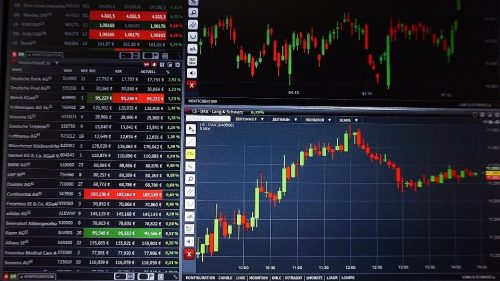
- What is forex? The foreign exchange market (forex, or FX) is a global, decentralized market where currencies are traded against each other.
- Currency pairs: Forex trading involves buying one currency and simultaneously selling another, expressed as currency pairs (e.g., EUR/USD, GBP/JPY).
- Pips: The smallest unit of price change in a currency pair.
- Leverage: Allows traders to trade with more funds than they have on hand, amplifying potential gains and losses.
Choosing the Right Forex Broker
A reliable broker is essential for successful forex trading. Consider:
- Regulation: Select a broker regulated by reputable financial authorities like the NFA (US) or FCA (UK).
- Spreads: Compare the difference between the bid and ask price (spreads) offered by different brokers. Tighter spreads mean lower costs.
- Trading platforms: Evaluate the trading platform’s features, charting tools, and ease of use.
- Customer support: Choose a broker with responsive and accessible customer support.
- Account types: Explore available account types (mini, micro, standard) with varying minimum deposits and features.
Popular Forex Brokers
Some of the well-established and reputable brokers include:
- FOREX.com: Highly regulated, competitive spreads, excellent educational resources.
- OANDA: Robust trading platform, transparent pricing, and in-depth market analysis tools.
- IG: Extensive range of markets (including forex), advanced trading features, trusted broker.
- XTB: User-friendly interface, good educational materials, and a variety of account options.
Developing Your Forex Trading Strategies
Choose a strategy that aligns with your risk profile and trading style:
- Scalping: Focuses on very small price movements over ultra-short timeframes, taking advantage of high market volatility.
- Day trading: Opening and closing positions within the same trading day.
- Swing trading: Capturing price movements that play out over a few days to several weeks.
- Position trading: Longer-term trades lasting weeks to months, often based on fundamental trends.
Technical Analysis vs. Fundamental Analysis
- Technical analysis: Analyzing historical price data, charts, and technical indicators (e.g., RSI, MACD, moving averages) to predict future moves.
- Fundamental analysis: Examining economic factors, interest rates, political events, and news that may influence currency values.
Essential Forex Trading Concepts
- Lot sizes: Standardized units of currency traded in the forex market.
- Margin: A percentage of the trade value required as a deposit to open a leveraged position.
- Risk-to-reward ratio: The potential profit compared to potential loss on a trade. Aim for risk-reward ratios greater than 1:1
Bankroll Management
Prudent bankroll management is crucial for long-term success in forex:
- Risk management: Never risk more than 1-2% of your account balance on any single trade.
- Stop-loss orders: Utilize stop-losses to limit potential losses automatically.
- Take-profit orders: Set profit targets to lock in gains and avoid giving back profits.
- Don’t overtrade: Avoid making trades out of boredom or a desire for quick profits.
Additional Tips for Forex Trading
- Start with a demo account: Practice trading with virtual funds to gain experience before risking real capital.
- Develop a trading plan: Outline your trading strategy, risk management rules, and entry/exit criteria in advance.
- Maintain a trading journal: Track your trades, analyze results, and identify areas for improvement.
- Control your emotions: Avoid impulsive decisions driven by greed or fear.
Disclaimer: This guide serves as a general introduction to forex trading. Trading currencies carries significant risk, and it’s essential to seek professional financial advice before investing.







